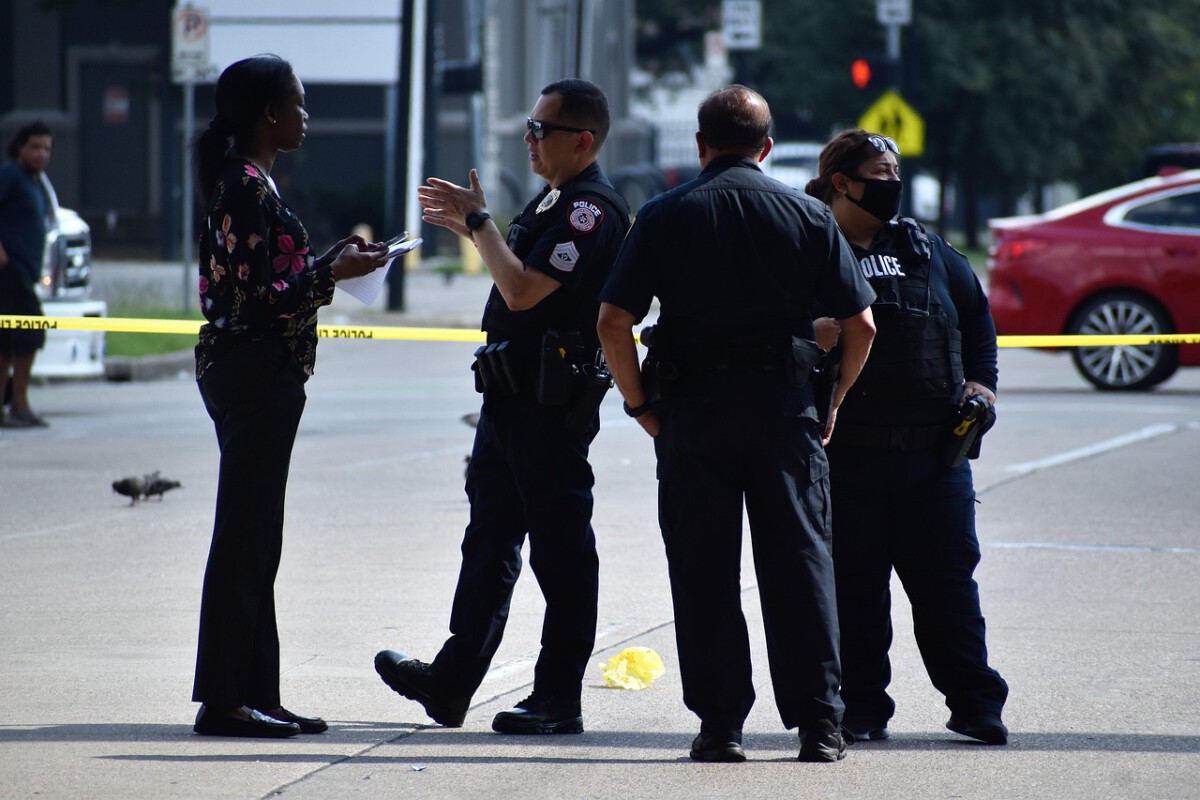
A Shocking Personal Connection Emerges (Image Credits: Pixabay)
Washington, D.C. – The quiet tension hung in the air like a storm about to break, as familiar faces from a shared past collided in the pursuit of truth behind a photographer’s senseless death.
A Shocking Personal Connection Emerges
Imagine digging into a murder case only to realize the suspect is someone you knew as a kid. That’s exactly what happened to Nikki Battiste, a seasoned correspondent for CBS’s “48 Hours.” Her investigation into the 2023 killing of beloved D.C. photographer Joe Shymanski pulled her into a world she never expected.
Battiste grew up in the same small Pennsylvania town as Brandon Holbrook, the man accused of Shymanski’s murder. They weren’t close friends, but the overlap in their lives made the story hit differently. As she pieced together the evidence, the distance between playground memories and courtroom reality shrank fast.
This twist turned a standard true-crime report into something raw and emotional, forcing Battiste to navigate uncharted emotional waters while staying true to her reporting roots.
Who Was Joe Shymanski?
Joe Shymanski wasn’t just any victim; he was a fixture in D.C.’s creative scene. Known for his striking portraits and vibrant personality, he captured the city’s essence through his lens. Friends and family remember him as a devoted dad and a key player at Eastern Market, where he ran a stall with his business partner.
On Labor Day weekend in 2023, everything changed. Shymanski vanished from his home in Calvert County, Maryland, just outside D.C. His car sat in the driveway, keys inside, but he was gone. What started as a missing person report quickly unraveled into a nightmare of violence.
Prosecutors later revealed Holbrook drove from Pennsylvania to shoot Shymanski in his own driveway, with no clear motive. The randomness of it all left everyone reeling, turning a talented life into a haunting mystery.
The Trail Leading to Brandon Holbrook
Investigators moved quickly after Shymanski’s disappearance. Surveillance footage and license plate readers pinned Holbrook at the scene around the time of the gunshots. He didn’t stop there; he transported the body back to his Pennsylvania home, where he dismembered and burned the remains.
Holbrook’s trial in Calvert County Circuit Court wrapped up in June 2025, with a guilty verdict for first-degree murder. Just weeks ago, on July 18, 2025, a judge sentenced him to life without parole. The prosecution called it a brutal, motiveless act, emphasizing how Holbrook “decided to kill Joe simply because he could.”
Details from the case painted a chilling picture: no prior connection between the men, yet Holbrook traveled nearly 200 miles to carry out the crime. It was a stark reminder of how ordinary lives can intersect with unimaginable horror.
Nikki Battiste’s Emotional Confrontation
For Battiste, the story demanded more than facts; it required facing her past head-on. In the “48 Hours” episode aired on October 17, 2025, she describes confronting Holbrook during the investigation. That moment blurred the lines between journalist and personal history.
Growing up in Reedsville, Pennsylvania, their paths crossed in school and community events. Battiste recalls a version of Holbrook far removed from the man in custody. Yet, as evidence mounted, she had to reconcile those memories with the cold facts of the case.
Her reporting added intimate layers to the broadcast, including interviews with Shymanski’s loved ones. It highlighted not just the crime, but the human cost rippling through families and old friendships alike.
Key Evidence That Sealed the Case
The prosecution built a airtight case on technology and witness accounts. Here’s a quick breakdown of what stood out:
- License plate readers tracked Holbrook’s vehicle from Pennsylvania to Maryland and back on September 3, 2023.
- Neighbor reports of gunshots matched the timeline perfectly.
- Forensic analysis confirmed Shymanski’s remains at Holbrook’s property, linking him directly to the dismemberment.
- Cell phone data showed no prior contact between the two men, underscoring the randomness.
- Holbrook’s own admissions during interviews added to the damning portrait.
These elements left little room for doubt, turning speculation into conviction. The trial’s eight-day span kept the community on edge, but justice finally arrived.
The Broader Impact on True Crime Reporting
Stories like this push journalists to their limits, especially when personal ties creep in. Battiste’s experience shows how true crime can unearth buried connections, making the work feel intensely personal. It also spotlights the dedication needed to uncover truths without letting emotions cloud the narrative.
In Shymanski’s case, the “48 Hours” coverage brought fresh attention to a tragedy that shook D.C.’s art world. Episodes like this remind us why these programs endure: they humanize the headlines and honor the victims.
Yet, for reporters like Battiste, it leaves lasting questions about how the past shapes the stories we tell today.
Key Takeaways from the Shymanski Case:
- The murder highlighted the dangers of random violence, even in quiet suburbs.
- Battiste’s involvement added a rare personal angle to investigative journalism.
- Swift police work and tech evidence ensured accountability, closing the chapter on a senseless loss.
As the dust settles on this heartbreaking chapter, one thing stands clear: tragedies like Joe Shymanski’s remind us to cherish the lives that light up our communities. What do you think about the personal twists in true crime stories? Share your thoughts in the comments.







